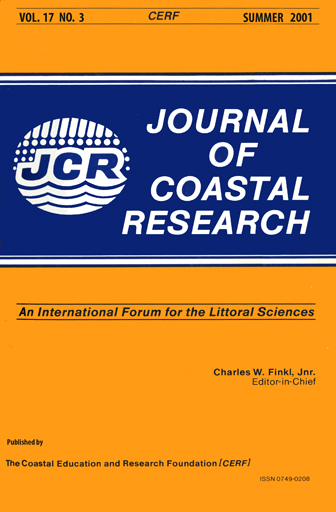Rates and Processes of Marsh Shoreline Erosion in Rehoboth Bay, Delaware, U.S.A.
Keywords:
Coastal retreat, recession, wave power.Abstract
The marsh shoreline in western Rehoboth Bay, Delaware, is rapidly eroding due to wave attack. A 30-90 cm vertical scarp characterizes the shoreline and exposes the present-day rootmat and the underlying mud unit. Using an Electronic Total Station surveying instrument, marsh erosion rates were determined for six 10-meter shoreline sections. Over a three-year period, averaged erosion rates ranged from 14 cm/yr to 43 cm/yr. Three styles of shoreline erosion were observed. (1) Cleft and neck formation-V-shaped notches are cut into an initially "straight" shoreline. Between adjacent clefts, marsh necks, up to three meters in length, occur creating an undulatory shoreline geometry. (2) Neck cut-off-marsh necks can be cut off from the marsh creating a small marsh "stack." (3) Undercutting with rootmat toppling-wave action erodes the lower mud unit faster than the overlying rootmat creating an overhang that eventually topples into the bay. At a decimeter scale, shoreline geometry is due to successive changes in erosional style. In contrast, the geometry of a fringing marsh shoreline over several hundred meters is likely controlled by antecedent topography and not by lateral variations in erosion rates. Rates of erosion are correlated with wave power. The wave power potentially impinging on nine selected marsh shoreline sites was calculated using wind, bathymetric, and fetch data. Erosion rates for each site were plotted against estimated wave powers producing a regression equation that allows erosion rates to be predicted. As wave power increases, the rate of erosion increases.Downloads
Published
2001-07-27
Issue
Section
Articles


